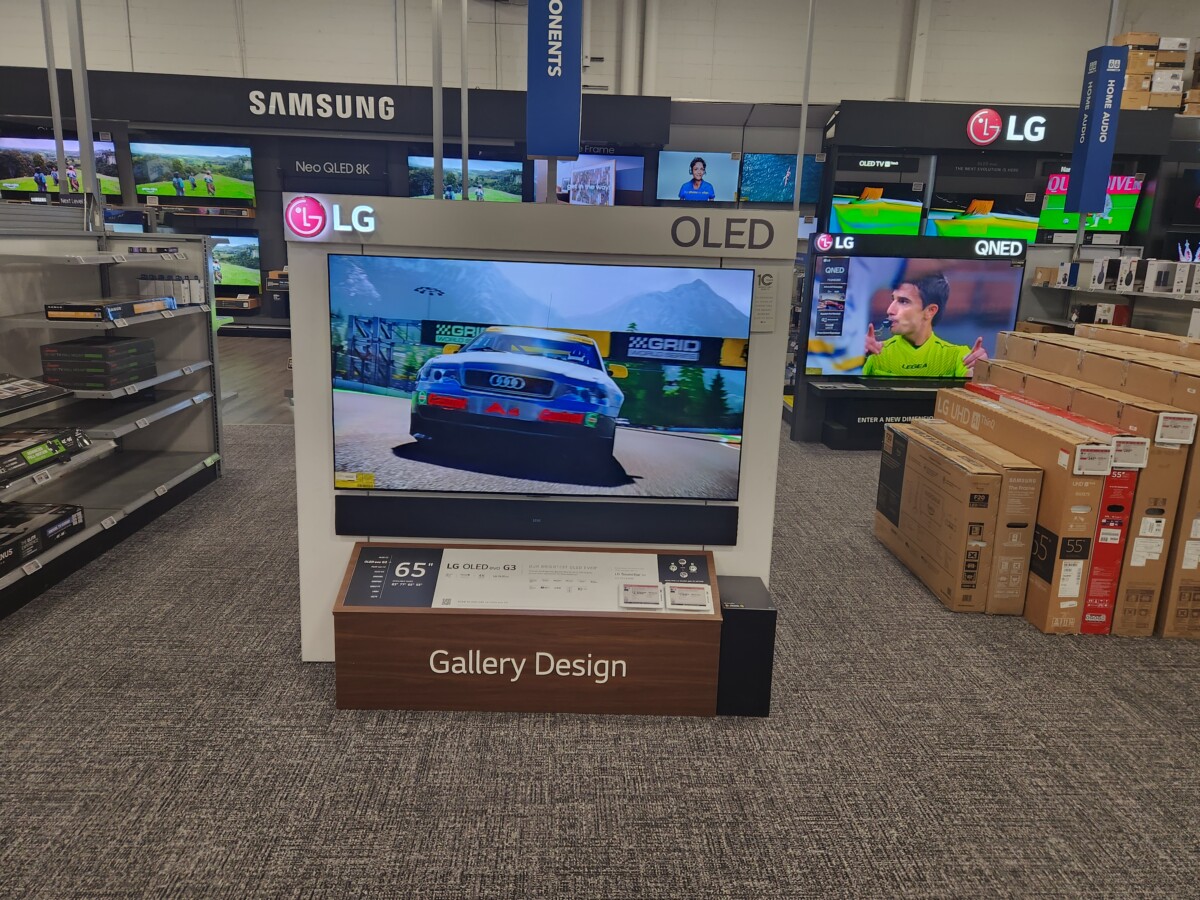As an Amazon Associate I earn from qualifying purchases
OLED TVs are becoming more and more popular, especially as the prices have gone down over the years.
One of the many perks you hear about OLED TV’s are about its contrast ratio and true black levels, but is this true?
Do OLEDs have true black? Unlike other TVs, OLED pixels can completely turn off, emitting no light, resulting in perfect black levels and unmatched contrast ratios.
OLED technology delivers the deepest, truest blacks in the world of television displays.
OLED TVs can display true black
Instead of relying on a backlight, OLED TVs utilize organic compounds that emit light when an electric current is applied.
This unique characteristic allows OLED pixels to emit their own light individually.
When a pixel is turned off, it doesn’t emit any light, achieving what is often referred to as “absolute black.”
This ability to completely turn off individual pixels creates an infinite contrast ratio, theoretically producing the purest black possible.
Contrast Ratio Enhances True Black Levels
The contrast ratio, the difference between the brightest and darkest parts of an image, is a crucial metric in determining a TV’s picture quality.
In this realm, OLED TVs shine brightly.
Their ability to achieve true black levels creates an astonishing contrast ratio, making images appear more vibrant and lifelike.
In comparison, other TVs, even those with local dimming technology, struggle to match OLED’s black levels due to the presence of a backlight that can’t be turned off on a pixel-by-pixel basis.
True OLED Black Levels need to be seen in a dark room
Due to OLED TV’s having lower brightness levels and perfect blacks you want to watch OLED in a dark room. I wrote a separate article on this that I just linked to if you’d like to read it.
Just summarizing, In a dark room, the nuances of shadows and highlights become exceptionally pronounced, allowing viewers to discern intricate details that might be lost in a brightly lit environment.
The absence of ambient light interference ensures that the OLED’s superior black levels remain uncompromised, delivering a picture quality that is unparalleled.
Additionally, in a dimly lit setting, OLED TVs significantly reduce eye strain. The absence of harsh lighting minimizes glare and reflections, allowing the viewer to focus entirely on the content without distractions.
Overall, the rich, true blacks and heightened contrast ratios make watching OLED TVs in a dark room the optimal choice for anyone seeking a premium, cinematic, and eye-friendly viewing experience.
Best OLED TV’s
- Sony A90K: I have two of these models in my house, one in the guest bedroom and one in the living room and I couldn’t be happier. This TV boasts a near-infinite contrast ratio and perfect black levels, It makes it an excellent choice for watching movies in a dark room. The only con is this TV caps out at 48 inches so If you want a bigger TV then I’d go with a different OLED system. However, if you are a fan of Sony Bravia and want a budget model, this is perfect.
- Sony A80J: In my bedroom, I have a Sony A80J OLED, this television offers exceptional viewing quality, especially for 4K movies. Its outstanding contrast and vibrant color range are truly impressive, thanks to the utilization of cutting-edge HDR technology such as Dolby Vision. However, it’s worth noting that this TV comes with a hefty price tag and might not be readily available as a new product on Amazon anymore. This is due to it being a Sony Bravia TV, which you pay extra for the brand name. Still, I can’t recommend it enough.
- Samsung S90C: The S90C is a must-have for movie enthusiasts craving an immersive 4K HDR experience. This OLED boasts striking highlights, including remarkable peak brightness and profound black levels that combine to deliver breathtaking HDR visuals. This TV stands tall as the ultimate budget-friendly OLED system available.
- LG G3 OLED: What sets the G3 apart is its innovative Micro Lens Array layer, which acts as a focusing lens that significantly boosts the brightness of the TV’s WOLED panel. This feature makes it one of the brightest OLED TV’s on the market. Lack of brightness is a con for many OLED TV’s so if you want striking contrast with added brightness then this is a must-buy.
Conclusion
In conclusion, the rise of OLED TVs has undeniably revolutionized the way we experience entertainment at home.
The debate over true black levels has been decisively settled by OLED technology, which, unlike its counterparts, can achieve absolute black thanks to its ability to turn off individual pixels.
This exceptional capability not only results in unparalleled contrast ratios but also translates into a viewing experience that is nothing short of cinematic magic.
The nuances of shadows and highlights come to life in a dark room, offering viewers an immersive, eye-friendly, and distraction-free environment.
As technology continues to advance, OLED TVs stand at the forefront, offering a glimpse into the future of television displays.
Whether you opt for the near-infinite contrast ratio of the Sony A90K, the vibrant color range of the Sony A80J, the immersive HDR experience of the Samsung S90C, or the striking contrast with added brightness of the LG G3 OLED, one thing remains clear: OLED TVs have truly redefined what it means to see black on a screen, making every viewing moment a masterpiece of visual delight.
With a variety of options available to cater to different preferences and budgets, embracing an OLED TV ensures not just a purchase but an investment in an unparalleled, high-quality viewing experience that continues to set new standards in the world of home entertainment.






